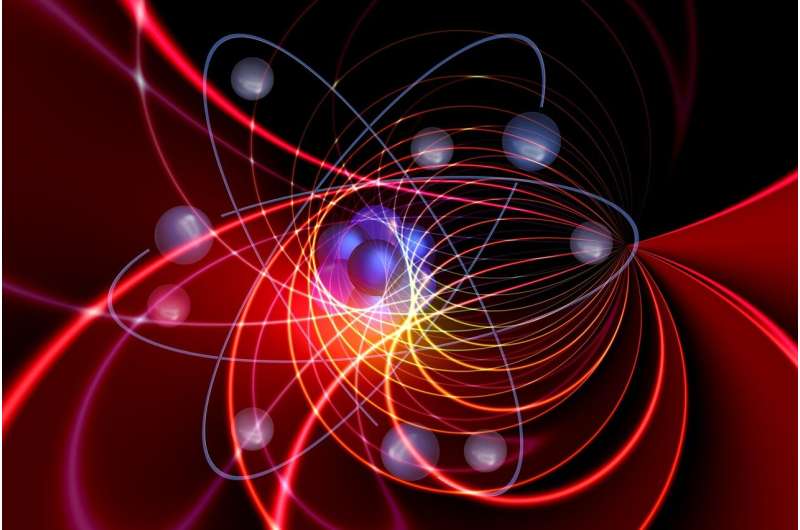Improving lab constraint on exotic spin interaction

Prof. Du Jiangfeng, Prof. Rong Xing, and their colleagues from the Key Laboratory of Micromagnetic Resonance, University of Science and Technology of China (USTC) of the Chinese Academy of Sciences (CAS) have set the most stringent laboratory constraint on the exotic spin- and velocity-dependent interaction at the micrometer scale. This study was published in Physical Review Letters.
The search for dark matter, dark energy, and extra forces is important for the understanding of the existence of the matter that accounts for about a quarter of the universe, but little progress has been made. It is necessary to theoretically and experimentally find particles outside the Standard Model, a tradition model for microscopic particles excluding dark matter, as candidates for dark matter.
Exotic spin interaction can be induced by new bosons outside the Standard Model, such as axons, axon-like bosons, dark photons and Z-bosons. Since its proposition in 1984, a series of sophisticated experiments have been made to explore these exotic spin interactions.
In this study, the researchers carried out an experimental exploration of the velocity-dependent exotic spin interactions. They used the quartz tuning fork to drive the mass source to make simple harmonic motion in a direction perpendicular to the diamond surface.
Then, they designed the experimental sequence to convert the exotic interaction to be explored into the quantum phase information of the single-spin quantum sensor. This experiment gave the laboratory limit on a type of velocity-dependent spin interaction at the micrometer scale. The limit at 200 microns is four orders of magnitude stricter than the bound established in the previous results based on the atomic spectra of Cesium, Ytterbium, and Thallium.
This study, as an interesting marriage of quantum sensing techniques and the test of fundamental interactions (traditionally in particle physics), is appealing to general physicists, and it provides an approach to probing new physics beyond the Standard Model.
Prof. Du's team has focused on research of the static exotic spin interaction. In 2018, it for the first time used nitrogen-vacancy defects in diamond as a single-spin sensor to search for exotic spin interactions (Nature Communications), and later set the most optimized constraint at the time on the micrometer scale on the spin-dependent exotic interaction with the single-spin sensor (Physical Review Letters), demonstrating the ability of the single-spin quantum sensor made from the single nitrogen-vacancy centers in diamond to explore new physical phenomena at the micro-nano scale.
More information: Man Jiao et al, Experimental Constraint on an Exotic Parity-Odd Spin- and Velocity-Dependent Interaction with a Single Electron Spin Quantum Sensor, Physical Review Letters (2021). DOI: 10.1103/PhysRevLett.127.010501
Journal information: Nature Communications , Physical Review Letters
Provided by University of Science and Technology of China




















